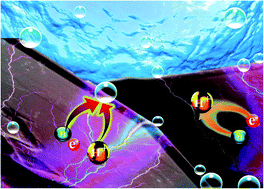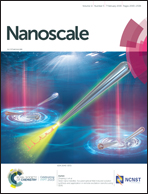Vertically aligned MoS2 nanosheets on graphene for highly stable electrocatalytic hydrogen evolution reactions†
Abstract
Conducting an efficient hydrogen evolution reaction (HER) using two-dimensional molybdenum disulphide as electrocatalysts remains a challenging task due to the insufficient active edge sites. In this regard, herein, molybdenum disulphide nanosheets with rich active sulphur sites were vertically grown on the graphene surface via a chemical vapour deposition process. The direct integration of vertically aligned MoS2 nanosheets on graphene forms a van der Waals (vdW) heterojunction, which facilitates a barrier-free charge transport towards the electrolyte as a result of unique and well-matched energy band alignment at the interface. The prospective combination of Ohmic graphene/MoS2 heterostructure and the high electrocatalytic edge activity of sulphur delivers an incredibly and small turn-on potential of 0.14 V vs. RHE in the acid electrolyte solution. Most importantly, the use of a vertical vdW device architecture exhibits nearly 8× improvement in HER than that of its layered counterpart. Moreover, the HER reaction is highly stable over 50 hours of continuous operation even after 150 days. The combined analysis of our study makes it certain that the graphene/MoS2 heterostructure will be an efficient alternative electrode for low-cost and large-scale electrochemical applications.



 Please wait while we load your content...
Please wait while we load your content...